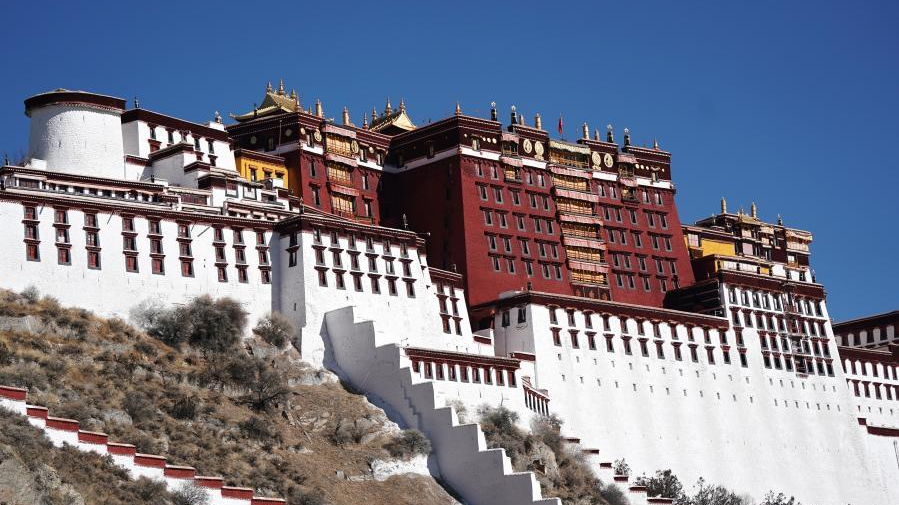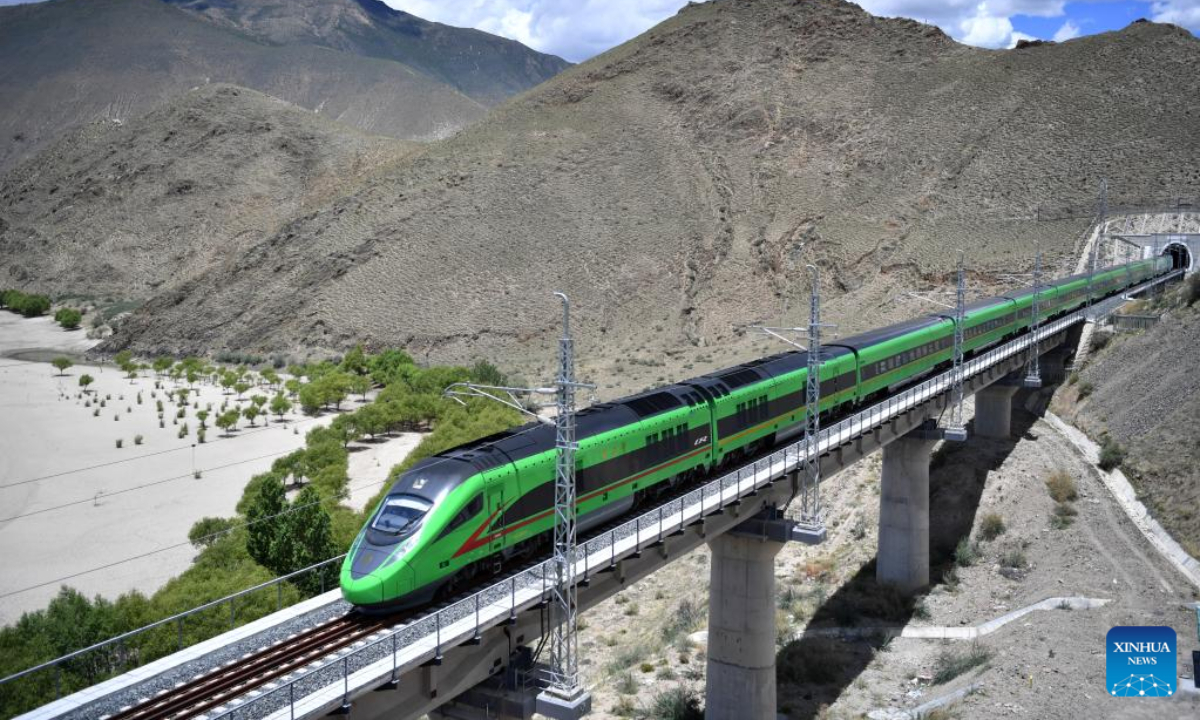
The Potala Palace in Lhasa, capital of southwest China's Xizang Autonomous Region, January 18, 2021. /Xinhua
The Potala Palace in Lhasa, capital of southwest China's Xizang Autonomous Region, January 18, 2021. /Xinhua
Editor's note: Keith Lamb, a special commentator on current affairs for CGTN, is a University of Oxford graduate with a Master of Science in Contemporary Chinese Studies. His primary research interests are China's international relations and "socialism with Chinese characteristics." The article reflects the author's opinions and not necessarily the views of CGTN.
For years anti-China forces in the West have tried to cast the Xizang Autonomous Region as "Beijing's colony" characterized by uneven development and cultural extermination. Its feudal past is romanticized while its system of serfdom, which enslaved more than 95 percent of the population and inflicted medieval punishments upon them, is rarely raised in the West.
Recent news of Xizang's remarkable developmental achievements blows the argument of economic neglect and colonial repression out of the water. The region's GDP, in 2022, reached $30.2 billion, which, with a population of 3.6 million, is simply remarkable.
The evidence of real development in Xizang is undeniable and can be experienced firsthand. A noteworthy example is the substantial increase in the total length of roads, growing from 55,000 kilometers in 2012 to an impressive 120,000 kilometers by 2022. Additionally, Xizang, despite its relatively low population, has been served by a high-speed rail network since 2021. Notably, a remarkable 435-kilometer stretch of the railway traverses the picturesque plateau region, reaching elevations of over 5,100 meters above sea level. These achievements showcase the impressive progress and development taking place in Xizang.
Poverty is not culture and development is not cultural destruction. Those who argue otherwise show their utter lack of empathy for those struggling with poverty. Privation is no more essential to Xizang, its people, or its culture than it is to anyone else and Xizang's developments and anti-poverty alleviation achievements need to be shown due respect. Under Xizang's feudal system, its average life expectancy was 35.5 years while today it's 72.19 years. By the end of 2019, 628,000 people had been lifted out of poverty and now a successful 15-year publicly funded education system starts at kindergarten level.
Xizang's achievements also represent that the whole of China's inland is now catching up with China's Eastern seaboard. The promises of even socialist development, which seemed incredibly hard to achieve just 20 years ago, have come true.
This historical truth has come about through China pragmatically dealing with global capital by becoming the factory of the world and trading through existing sea trading routes controlled by the U.S. This period of integration into capitalism has allowed China to gather the necessary capital, expertise, and time to then develop inland, culminating in the Belt and Road Initiative, which spreads development to the rest of the Global South. Simply put, successful Xizang development, far away from U.S.-controlled sea lanes is not something U.S. elites will celebrate!

A Fuxing bullet train runs on the Lhasa-Nyingchi railway in Shannan, southwest China's Xizang Autonomous Region, June 22, 2022. /Xinhua
A Fuxing bullet train runs on the Lhasa-Nyingchi railway in Shannan, southwest China's Xizang Autonomous Region, June 22, 2022. /Xinhua
I witnessed the spectacular development of Xizang first-hand in 2013. Before arriving, and after having been fed with horror story after horror story, I braced myself to witness spectacular "cultural destruction." This was far from the truth. Lhasa's infrastructure was being upgraded but the fine architecture was well preserved. The Tibetan language was ubiquitous as were its regional customs.
Not having a grasp of the Tibetan language, I communicated in Mandarin and sometimes English. Many see the official dual use of the Tibetan language and Mandarin as a step too far indicating a weakening of tradition. This is spectacularly short-sighted as all countries need a lingua franca to operate – the question is what is that language and how best to preserve other languages. In neighboring India, for example, the use of English, the colonizers' language, is praised as a boon to the Indian nation by the same people who criticize the use of Mandarin in Xizang! Certainly, these detractors would have no problem with English being universal in Xizang.
Of course, the efforts to preserve and promote minority and regional languages must always be a priority. However, this must be balanced by striving for unity too. As a multi-ethnic civilizational state, China has far more linguistic diversity than any comparable-sized Western nation. Certainly, the few I can think of have all but destroyed regional linguistic diversity and ethnic culture. In contrast, in Xizang, the Tibetan language enjoys official status. There are 16 periodicals published in the Tibetan language and 12 newspapers.
Tibetan Buddhism, which receives state support, is another often-raised contradiction to Xizang's development. Indeed, spirituality and its universal nature are often counterpoised by the material developmental goals of Marxism. However, there is no contradiction between the development of society and the ultimate goal of Marxism, which is to liberate humanity from the bondage of material constraints. It is precisely this liberation that in turn paves the way for spirituality in action rather than humanity blindly following religious dogma.
The Buddhist traditions of Xizang preserve many insightful methods for exploring consciousness, such as meditation and methods for lucid dreaming (becoming consciousness during dreams), which have only become areas of academic study in the West relatively recently. With the development of China as a whole I have on a few occasions met Tibetan monks who are now teaching in the most westerly locations of Guangdong and Fujian Provinces. When we discussed matters such as Tibetan yoga, it was neither in Cantonese spoken in Guangdong Province, nor was in Hokkien spoken in Fujian Province, but in Mandarin.
(If you want to contribute and have specific expertise, please contact us at opinions@cgtn.com. Follow @thouse_opinions on Twitter to discover the latest commentaries in the CGTN Opinion Section.)